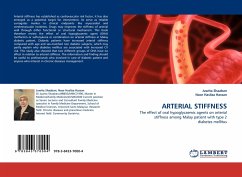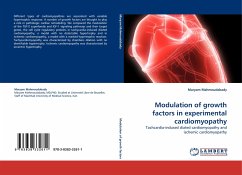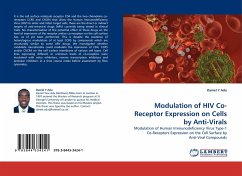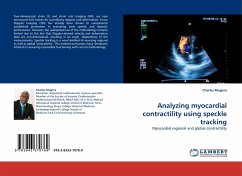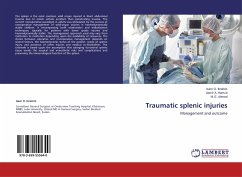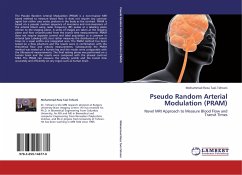
Pseudo Random Arterial Modulation (PRAM)
Novel MRI Approach to Measure Blood Flow and Transit Times
Versandkostenfrei!
Versandfertig in 6-10 Tagen
32,99 €
inkl. MwSt.

PAYBACK Punkte
16 °P sammeln!
The Pseudo Random Arterial Modulation (PRAM) is a non-invasive MRI based method to measure blood flow. It does not require any contrast agent but rather uses water protons in the body as the contrast. PRAM is based on a pseudo random sequence of inversions and non-inversions of the arterial blood using radio frequency (RF) pulses at a labeling plane inferior to the imaging plane. A series of images are taken at the imaging plane and flow reconstructed from the transit time measurements. PRAM does not require separate control and label acquisition as is common in Arterial Spin Labeling (ASL) bu...
The Pseudo Random Arterial Modulation (PRAM) is a non-invasive MRI based method to measure blood flow. It does not require any contrast agent but rather uses water protons in the body as the contrast. PRAM is based on a pseudo random sequence of inversions and non-inversions of the arterial blood using radio frequency (RF) pulses at a labeling plane inferior to the imaging plane. A series of images are taken at the imaging plane and flow reconstructed from the transit time measurements. PRAM does not require separate control and label acquisition as is common in Arterial Spin Labeling (ASL) but rather measures the distribution of transit times to a voxel within one integrated scan. The PRAM method has been tested on a flow phantom and the results were in confirmation with the theoretical flow and velocity measurements. Subsequently the PRAM method was tested on a human leg and the results were comparable with the Ultrasound measurements. The final testing phase was performed on ahuman brain and the results were compared with the phased contrast MRA. The PRAM can measure the velocity profile and the transit time accurately and efficiently on any organ such as human brain.



